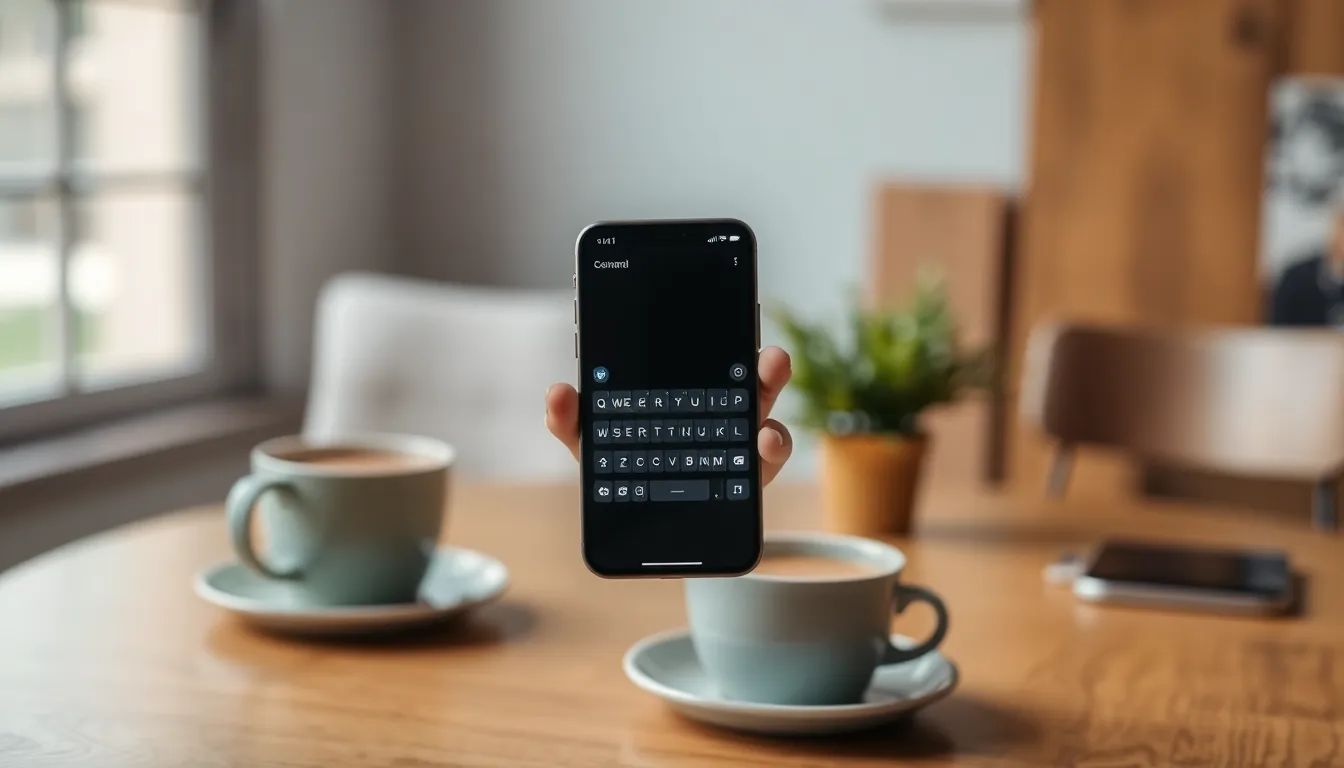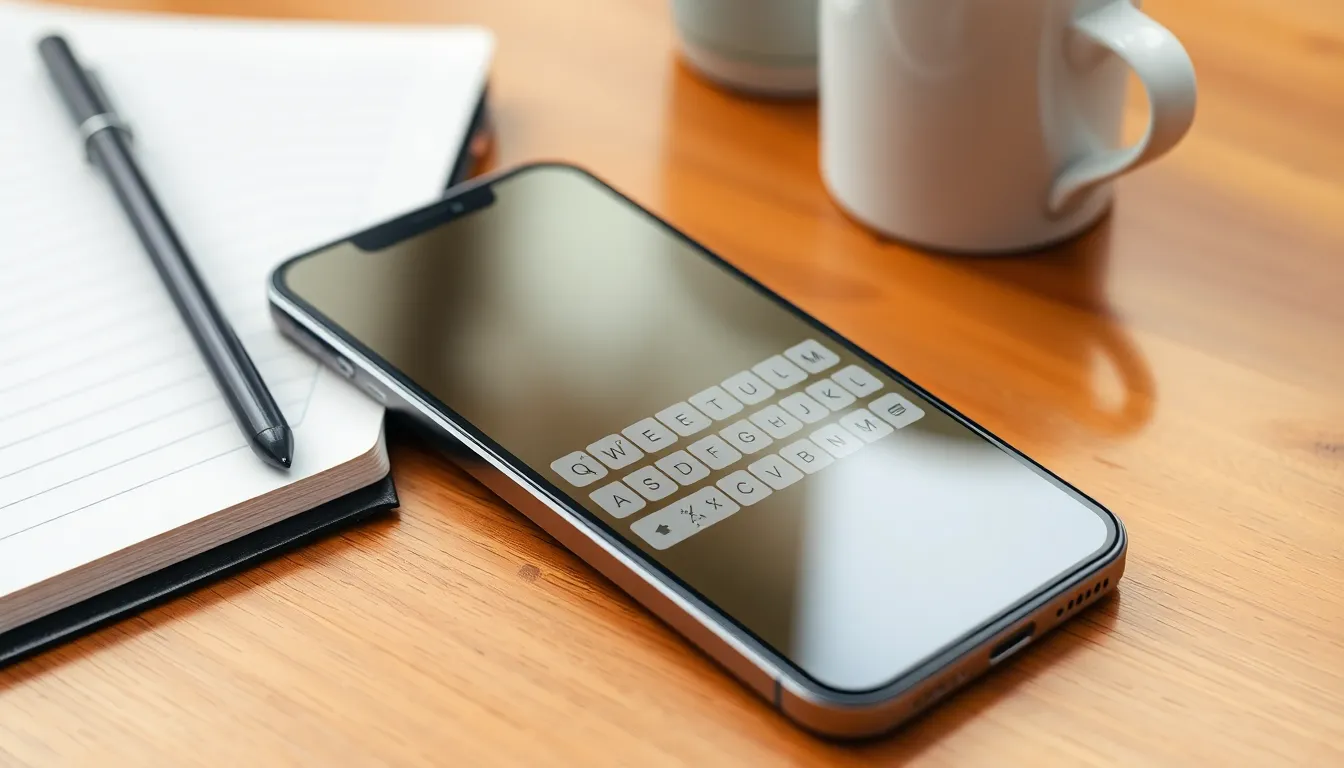Ever found yourself typing a novel on your iPhone only to realize your keyboard’s decided to play hide-and-seek? It’s like that one friend who always sits in the back of the group photo. But fear not! Moving your iPhone keyboard is as easy as pie—well, maybe easier if you’ve got a slice of cake nearby.
Table of Contents
ToggleUnderstanding the iPhone Keyboard
The iPhone keyboard plays a crucial role in the overall user experience. Users often encounter various features that enhance typing efficiency and convenience.
Features of the iPhone Keyboard
iPhone keyboards offer predictive text capabilities, suggesting words as users type to accelerate the writing process. Emoji access allows quick integration of symbols, making communication more expressive. Autocorrect fixes common mistakes automatically, which helps in reducing errors. Customizable keyboard settings enable adjustments for personal preferences, such as changing the keyboard’s height or enabling the one-handed mode. Additionally, multilingual support simplifies typing in multiple languages, expanding accessibility for diverse users.
Common Issues with Keyboard Placement
Users frequently experience the keyboard covering the text they are trying to read. When typing in certain apps, the keyboard might obscure crucial elements, causing frustration. Sometimes, the keyboard fails to appear at all, hindering users’ ability to input text. Accidental dismissals can occur when trying to interact with nearby screen elements, leading to interruptions while typing. Resizing can be challenging, especially for those unfamiliar with keyboard settings, complicating the typing experience further.
Moving the iPhone Keyboard

Moving the iPhone keyboard enhances comfort and accessibility while typing. Several methods facilitate this adjustment, enabling users to customize their experience.
Step-by-Step Guide
- Access the Keyboard: Start by opening any app that allows typing, such as Notes or Messages.
- Press and Hold: Hold down the globe or smiley face icon on the keyboard.
- Select Keyboard: From the pop-up menu, choose the “Floating” option.
- Drag the Keyboard: Move the keyboard to your preferred location on the screen by dragging it.
- Release: Let go of the keyboard to lock it in place.
- Return to Dock: To revert to the standard position, press and hold the globe again and select “Dock.”
Alternative Methods
Keyboard adjustments can also occur through device settings. Access the Settings app, then navigate to General, and select Keyboard. From there, toggle the Enable One-Handed Keyboard option to choose either left or right. This feature shrinks the keyboard for one-handed use. Users can seamlessly switch back to the default layout at any time. Familiarizing oneself with these methods assures a more efficient typing experience tailored to individual preferences.
Customizing Keyboard Settings
Customizing keyboard settings enhances typing comfort and efficiency. Tweaking these features can significantly improve the user experience on an iPhone.
Adjusting Keyboard Size
Adjusting keyboard size allows users to fit the keyboard better on the screen. Smaller keyboards provide more visibility for text while larger keyboards increase touch targets. Users can access the keyboard settings by navigating to Settings, selecting Display & Brightness, and adjusting text size. Activating the one-handed keyboard option also alters the keyboard size, optimizing screen space for easy access. This simple change benefits individuals who prefer larger keys or smaller displays, making the typing experience more enjoyable.
Resetting Keyboard Settings
Resetting keyboard settings offers a fresh start for users encountering issues. A user can restore the default keyboard settings by going to Settings, tapping on General, and selecting Transfer or Reset iPhone. From there, choosing Reset Keyboard Dictionary clears any personalized entries that may interfere with typing. This action resolves autocorrect errors and enhances predictive text functionality. Regularly resetting these settings keeps the typing experience smooth, especially for users who frequently switch between languages or keyboard layouts.
Tips for Better Typing Experience
Improving the typing experience on an iPhone involves exploring various options. Users can find enhanced comfort and efficiency through different techniques.
Using Third-Party Keyboards
Third-party keyboards offer features that standard keyboards may lack. These alternatives often include customizable layouts, themes, and enhanced predictive text. Users can download popular options like Gboard or SwiftKey from the App Store. After installation, they can enable these keyboards through Settings > General > Keyboard > Keyboards. Customizing settings allows for personalized predictions and quick access to emojis. Users should explore these keyboards to discover innovative features that match their typing preferences.
Gesture Typing on iPhone
Gesture typing provides a convenient way to input text while reducing the need for precise tapping. With this feature, users can swipe their fingers across the keyboard to type words. This method often enhances speed and reduces hand movement. To utilize gesture typing, users simply need to enable the “Slide to Type” feature in the keyboard settings. Experimenting with different swiping speeds allows for a more fluid typing experience. By practicing gesture typing regularly, users can increase their typing efficiency significantly.
Mastering the art of moving the iPhone keyboard can significantly enhance the typing experience. With just a few simple steps users can position the keyboard for maximum comfort and accessibility. This not only alleviates common frustrations but also allows for a more personalized interaction with the device.
Exploring customization options further empowers users to tailor their keyboards to meet individual needs. By embracing features like third-party keyboards and gesture typing, they can unlock new levels of efficiency. Regularly adjusting settings and experimenting with different layouts ensures a smoother and more enjoyable typing journey on their iPhones.




